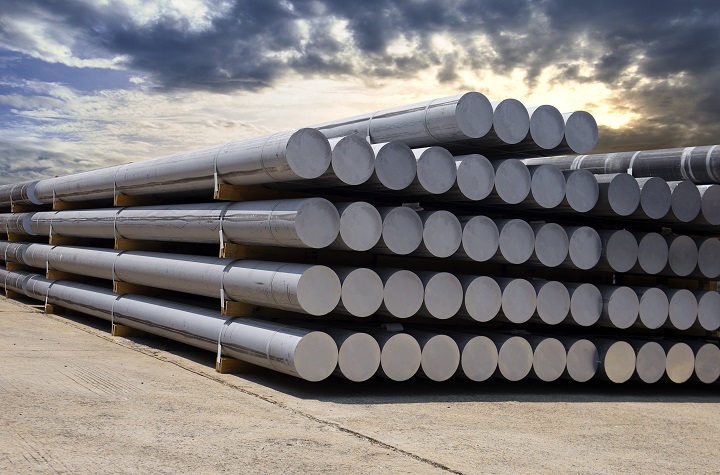In the world of modern construction, strong and stable foundations are non-negotiable. Whether it’s for high-rise buildings, bridges, or industrial structures, the foundation must handle massive loads safely and efficiently. One of the most trusted solutions for deep foundation systems is H piles — especially those made from high-quality steel. These structural components are engineered to transfer loads deep into the ground, ensuring that even the heaviest structures remain secure and stable for decades.
Let’s explore what makes pipe and steel H piles the preferred choice for load-bearing applications and how they contribute to the strength, durability, and longevity of modern infrastructure.
1. Understanding H Piles
H piles are long, structural steel members with an “H”-shaped cross-section. Their geometry allows for excellent load distribution both vertically and laterally. Typically driven deep into the soil using specialized machinery, H piles reach firm ground layers that can support substantial structural loads.
They’re a cornerstone of deep foundation systems — providing stability even in weak or variable soil conditions. Unlike shallow foundations, which rely on surface support, H piles transfer building loads deep into the earth where the soil or rock has higher bearing capacity.
2. The Strength Behind Steel Construction
Steel H piles are made from high-strength carbon or alloy steel, giving them remarkable load-bearing and tensile properties. This makes them ideal for construction projects that demand both vertical and lateral strength.
Unlike other materials such as timber or concrete, steel doesn’t crack, warp, or deteriorate when exposed to pressure or temperature changes. Its ductility — the ability to deform without breaking — allows it to absorb stress efficiently, making it particularly reliable during earthquakes or ground movements.
3. Superior Load-Bearing Capacity
The primary reason steel H piles are favored for foundations is their incredible ability to carry heavy loads. The symmetrical H-shaped cross-section provides high resistance against both bending and compression forces.
3.1 Deep Load Transfer
Steel H piles can be driven to significant depths, anchoring the structure into dense soil or bedrock. This ensures the vertical loads are distributed evenly through the pile, minimizing settlement and increasing structural stability.
3.2 Resistance to Lateral Forces
In addition to supporting vertical weight, H piles also resist lateral forces from wind, water, and seismic activity. This makes them ideal for structures such as bridges, retaining walls, and waterfront developments, where horizontal loads are a major concern.
4. Durability in Challenging Environments
Steel H piles are known for their long lifespan, even in difficult environments. With proper coatings or galvanization, they can withstand corrosion, chemical exposure, and water immersion. This durability makes them suitable for marine foundations, offshore platforms, and areas with variable moisture levels.
Their robust nature also means less maintenance and repair over the structure’s lifetime, offering excellent long-term value.
5. Versatility and Adaptability
5.1 Compatibility with Various Soil Conditions
One of the greatest advantages of steel H piles is their ability to perform well in a wide range of soil types — from soft clay to dense gravel. They can be driven through obstructions or mixed soil layers without losing shape or integrity.
5.2 Adjustable Length and Design
H piles can be easily cut, spliced, or welded to reach the desired length, providing engineers with flexibility during installation. This adaptability ensures each project receives a customized foundation solution tailored to its site-specific conditions.
6. Installation Efficiency
Steel H piles can be installed quickly using hydraulic hammers or vibratory drivers. This efficiency reduces project timelines and labor costs while maintaining precision and reliability. The installation process generates minimal soil displacement, which also reduces environmental impact and enhances safety on the job site.
Moreover, because they can be removed and reused in some applications, steel H piles are an eco-friendly choice for temporary structures or relocatable foundations.
7. Integration with Pipe Piles and Hybrid Systems
In some construction projects, H piles are combined with steel pipe piles to create hybrid systems that maximize strength and stability. Pipe piles excel in axial load-bearing (vertical strength), while H piles perform well under both vertical and lateral stress. Together, they form a comprehensive deep foundation system capable of supporting complex structures in demanding conditions.
This combination offers engineers unmatched design flexibility and ensures a solid base for projects of any scale.
8. Economic and Structural Advantages
8.1 Cost-Effective Longevity
While the initial investment in steel piles may be higher than in concrete or timber alternatives, the long-term benefits — reduced maintenance, longevity, and reusability — result in significant cost savings over time.
8.2 High Load-to-Weight Ratio
Steel’s exceptional strength relative to its weight allows for lighter yet more powerful structural foundations. This efficiency reduces transportation and installation costs while maintaining superior performance.
9. Proven Reliability from Industry Leaders
A reliable supplier ensures that each H pile meets strict engineering standards and quality control requirements. Precision manufacturing, consistent steel grades, and advanced coating technologies are key to dependable performance.
A trusted example of this reliability is Stealth Pipe and Steel h piles, known for their superior quality, precision engineering, and durability. Built to meet demanding structural requirements, these piles provide a foundation solution that combines strength, longevity, and consistent performance across diverse construction projects.
10. Conclusion: Strength That Lasts a Lifetime
Pipe and steel H piles have revolutionized foundation design by offering an unbeatable combination of strength, adaptability, and durability. Their ability to handle extreme loads, resist environmental challenges, and perform across varied soil conditions makes them a cornerstone of modern engineering.
From skyscrapers and bridges to marine structures and industrial facilities, H piles continue to prove their worth as the backbone of stable, resilient foundations. When built with precision and quality materials, they offer peace of mind that your structure stands on a base designed to last for generations — a true testament to the enduring power of engineering excellence and innovation.












